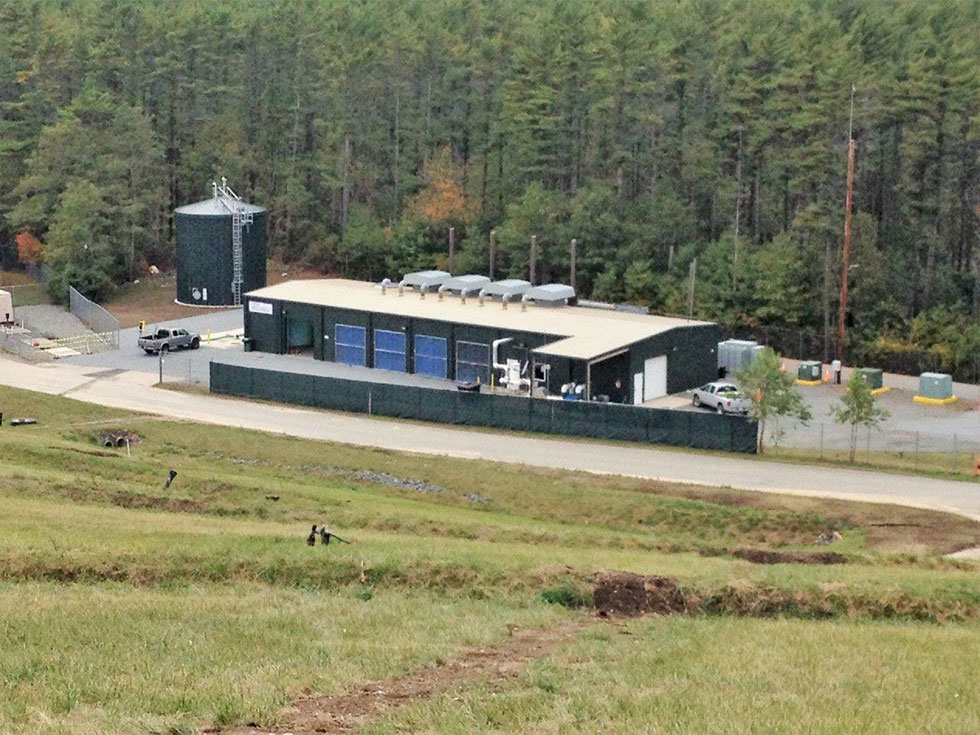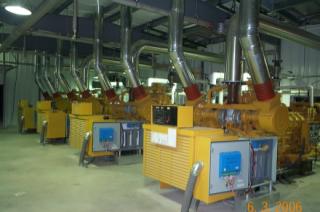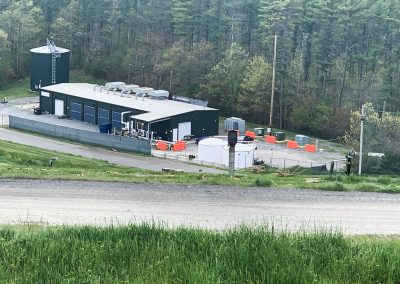Project Development
CommonWealth is the developer and sole owner/operator of two projects at the Crapo Hill Landfill in Dartmouth, MA:
- A 3.3-MW landfill gas-to-electricity project known as the Greater New Bedford LFG Utilization Project (the LFG Project).
(CNBE) The LFG Project generates electricity from combustion of landfill gas in four Caterpillar 3516 LE internal combustion engines. This facility is located on a site adjacent to the Crapo Hill Landfill in Dartmouth, MA, and leased from the Greater New Bedford Regional Refuse District, which owns and operates the landfill. The LFG Project is owned by CommonWealth New Bedford Energy, LLC (CNBE), which is owned by CommonWealth.



Landfill gas is collected from a series of vertical and horizontal extraction wells connected by piping and forming a network that covers the entire volume of the Crapo Hill Landfill. The gas typically consists of 48% to 55% methane, up to 40% carbon dioxide and less than 1% oxygen, with the balance mostly nitrogen drawn in from ambient air.
Two vacuum blowers connected to the collection network bring the gas from the landfill to the LFG Project, then through a media-based system to remove hydrogen sulfide and a condensate knock-out to remove moisture. The blowers then push the pressurized gas through a radiative cooler and coalescing filter before delivery to the engines for combustion. The engines drive generators rated at 825 kW each.
The electricity is delivered to the regional grid through the Eversource 13.2 kV local distribution system. Air emissions are controlled by ensuring efficient combustion, aided by a state-of-the-art air-to-fuel ratio controller on each engine for optimized control of NOx and CO emissions.
The LFG Project was constructed starting in March 2005 and achieved commercial operation in December 2005. The sulfur removal system, supplied by MV technologies, Inc., was added in 2016.
Development was supported in part by loan programs of the Massachusetts Renewable Energy Trust (now the Massachusetts Clean Energy Center) and private investments of debt and equity.
Environmental benefits of the LFG Project include the following:
- Supports efficient collection of methane gas from the landfill, thereby preventing its emission to the atmosphere. Methane has 28 times more impact on global warming than emission of an equal volume of carbon dioxide.
- Destroys the methane by combustion with an effectiveness that exceeds 99.8 percent.
- Controls landfill odors by removing the hydrogen sulfide and destroying VOCs and other odorous compounds generated as a part of the landfill gas.
- Displaces electricity that would otherwise be generated from fossil fuels.
- Avoids losses and adverse reliability impacts of long-distance transmission of electricity generated from remote sources.
